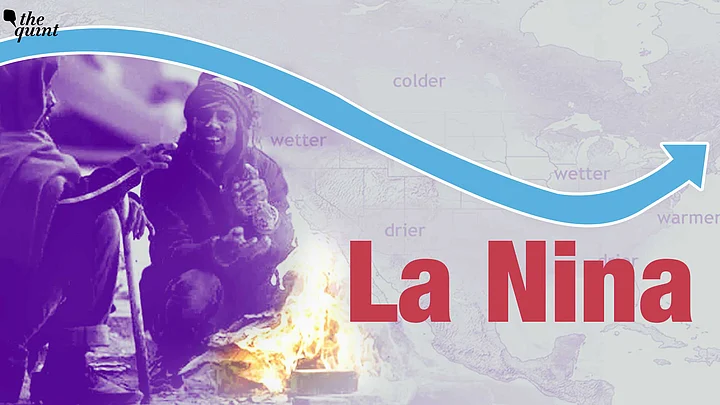As was expected, this year too, Diwali ended with air quality monitors across Delhi and several other cities in North India flashing PM 2.5 levels of 999 – the highest these monitors can display.
But recent reports tell us that winters this year will be colder and all meteorological conditions will align for air quality levels to worsen. This would largely be caused by a phenomenon called La Nina, which has been triggered by climate change.
With dipping temperatures, the threat of a vicious smog circle looms large for north-western plains ahead of this season. Experts have warned to exercise extra caution this season as weather conditions cannot be controlled, but emissions can.
“We have to be more cautious this season, as pollution may get worse with chilly winters in the offing."Dr Sagnik Dey, Associate Prof Centre for Atmospheric Sciences, IIT-Delhi & Coordinator, Centre of Excellence for Research in Climate Change and Air Pollution (CERCA).
La Nina is all set to bring record breaking low temperatures during December and January. This winter chill is likely to aggravate air pollution across Indo-Gangetic Plains (IGP), these will include cities like Amritsar, Chandigarh, Agra, Kanpur, Moradabad, Varanasi, Lucknow, Patna and Gaya, and many others.
The peak of stubble burning will also be delayed this year because the monsoons stayed for longer, delaying the cropping season. This will also be contributing to higher levels of pollution, along with the firecrackers on Diwali, according to the background briefing compiled by Climate Trends on La Nina impact on this winter and air pollution levels.
What is La Nina?
La Niña means Little Girl in Spanish. During La Niña events, trade winds are stronger than usual, pushing more warm water toward Asia. During a La Niña year, winter temperatures are warmer than normal in the South and cooler than normal in the North.
La Nina has made an appearance for the second consecutive year in India.
November and December are expected to be colder than usual in India. According to a Bloomberg report, temperatures are expected to fall up to 3 degrees celsius in some northern cities in January and February before recovering.
“There is a large probability of a second back-to-back La Nina, that may result in extreme cold from December 2021-February 2022."G P Sharma, PresidentMeteorology and Climate Change, Skymet Weather.
Winters and Air Pollution
Winters are a favourable time for increase in pollution. In the wintertime, cold air frequently settles over northern India. This cold air gets trapped under a layer of warm air and fails to rise above it. Leading to a build up of pollution builds in the cold air, the haze seen in the winter months is the result of this mostly.
More number of colder days likely in the season will invariably lead to more number of ‘poor’ to ‘severe’ air quality days ahead for the entire IGP, especially Delhi NCR, say experts.
"With drop in temperatures, there is potential for more stagnant conditions... In a nutshell, all else remaining constant, cooler conditions inhibit vertical mixing within the atmosphere. Therefore, possibilities are higher for poor air quality.”Dr V Vinoj, Assistant Prof, School of Earth Ocean and Climate Sciences, IIT Bhubaneswar.
If we continue with the same amount of emissions along with unfavourable meteorological conditions, there could be some substantial increase in the pollution levels in the coming season... We have no control over meteorological conditions, but we can control emissions,” said Dr Dey.
Haryana has already surpassed the fire counts registered last year for crop residue burning, followed by Uttar Pradesh which is catching up fast with the count in 2020. Seeing the trend in other states, Punjab is expected to pick up pace in the coming days as well, according to the briefing by Climate Trends.
Experts claim the next two weeks will be crucial for Delhi’s air quality as stubble burning is likely to peak across the IGP region.
With the spike on Diwali, it has become a tricky situation in Delhi-NCR. Most stations in Delhi recorded PM2.5 levels ranging from 800 to 1700 ug/m3 during 8 pm to 5 am, peaking around midnight.
(At The Quint, we question everything. Play an active role in shaping our journalism by becoming a member today.)
